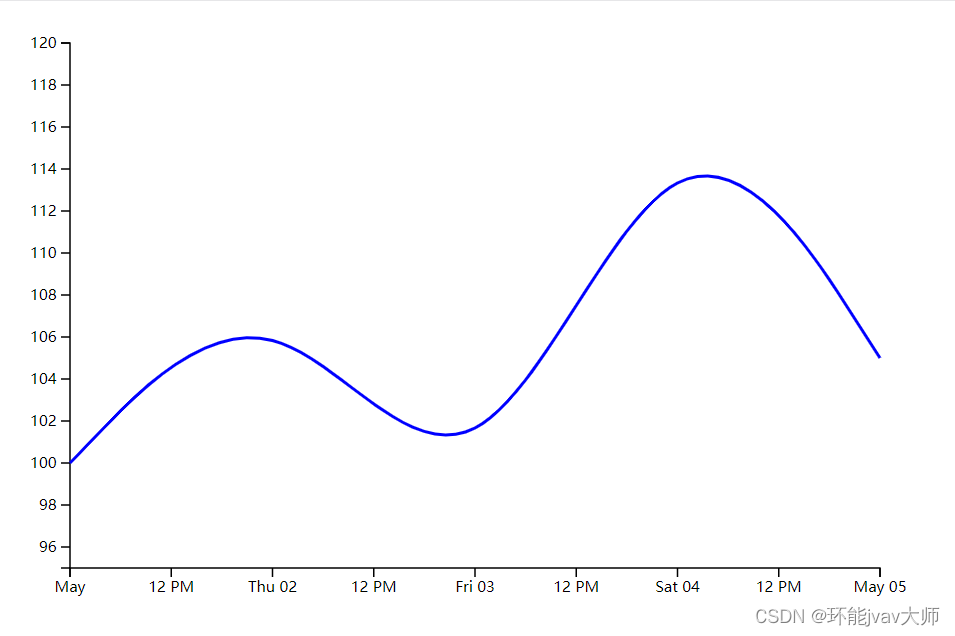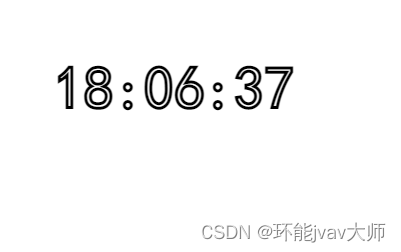D3.js介绍
D3.js是一个流行的JavaScript数据可视化库,全称为Data-Driven Documents,即数据驱动文档。它以数据为核心,通过数据来驱动文档的展示和操作。D3.js提供了丰富的API和工具,使得开发者能够创建出各种交互式和动态的数据可视化效果。
官方介绍网站:What is D3? | D3 by Observable
D3.js导入方式介绍
在JavaScript中导入D3.js通常使用ESM+CDN、UMD+CDN和UMD+local这三种方式,其中:ESM (ES Modules):ESM是ECMAScript模块(ECMAScript Modules)的缩写,也被称为ES6模块,是JavaScript官方的模块化方案。它使用import和export语句进行模块的导入和导出,支持静态导入和动态导入。
CDN (Content Delivery Network):CDN即内容分发网络,是一种通过分布在多个地理位置的服务器来快速、有效地向用户分发内容的网络服务。使用CDN可以加快资源的加载速度,提高用户体验。
UMD (Universal Module Definition):UMD是一种通用的模块定义方式,旨在使JavaScript库或模块能够在多种环境中使用,包括浏览器全局变量方式、AMD环境和CommonJS环境(如Node.js)。UMD允许库或模块在各种不同的JavaScript模块加载器和环境中运行。
local:将JavaScript库或模块直接保存在本地项目中,而不是从外部CDN或其他远程位置加载。
D3.js导入方式1:ESM+CDN
<!DOCTYPE html>
<div id="container"></div>
<script type="module">import * as d3 from "https://cdn.jsdelivr.net/npm/d3@7/+esm";// 一大堆代码</script>D3.js导入方式2:UMD+CDN
<!DOCTYPE html>
<div id="container"></div>
<script src="https://cdn.jsdelivr.net/npm/d3@7"></script>
<script type="module">// 一大堆代码
</script>D3.js导入方式3:UMD+local
<!DOCTYPE html>
<div id="container"></div>
<script src="/d3.v7.js"></script>
<script type="module">// 一大堆代码
</script>D3.js文件官方下载地址:Getting started | D3 by Observable

使用D3.js绘制柱形图
<!DOCTYPE html>
<html>
<head> <meta charset="utf-8"> <title>GGBoy</title> <script src="/d3.v7.js"></script>
</head>
<body> <script> const width = 640; const height = 400; const marginTop = 20; const marginRight = 20; const marginBottom = 30; const marginLeft = 40; const innerWidth = width - marginLeft - marginRight; const innerHeight = height - marginTop - marginBottom; const svg = d3.select("body").append("svg") .attr("width", width) .attr("height", height); const plotArea = svg.append("g") .attr("transform", `translate(${marginLeft},${marginTop})`); const x = d3.scaleBand() .domain(["Category1", "Category2", "Category3"]) .padding(0.1);const y = d3.scaleLinear() .domain([0, 100]) .range([innerHeight, 0]); // Add the x-axis. plotArea.append("g") .attr("transform", `translate(0,${innerHeight})`) .call(d3.axisBottom(x)); // Add the y-axis. plotArea.append("g") .call(d3.axisLeft(y)); const data = [ { category: "Category1", value: 50 }, { category: "Category2", value: 75 }, { category: "Category3", value: 30 } ]; plotArea.selectAll(".bar") .data(data) .enter().append("rect") .attr("class", "bar") .attr("x", d => x(d.category)) .attr("width", x.bandwidth()) .attr("y", d => y(d.value)) .attr("height", d => innerHeight - y(d.value)) .attr("fill", "steelblue"); </script>
</body>
</html>
使用D3.js绘制曲线图
<!DOCTYPE html>
<html>
<head> <title>GGBoy</title>
</head>
<body> <div id="container" style="width: 600px; height: 400px;"></div> <script type="module"> import * as d3 from "https://cdn.jsdelivr.net/npm/d3@7/+esm"; var data = [ {date: '2024-05-01', close: 100}, {date: '2024-05-02', close: 110}, {date: '2024-05-03', close: 95}, {date: '2024-05-04', close: 120}, {date: '2024-05-05', close: 105} ]; var parseDate = d3.timeParse("%Y-%m-%d"); data.forEach(function(d) { d.date = parseDate(d.date); }); const width = 600; const height = 400; const marginTop = 20; const marginRight = 20; const marginBottom = 30; const marginLeft = 40; var x = d3.scaleTime() .range([marginLeft, width - marginRight]) .domain(d3.extent(data, function(d) { return d.date; })); var y = d3.scaleLinear() .range([height - marginBottom, marginTop]) .domain(d3.extent(data, function(d) { return d.close; })); var svg = d3.select("#container").append("svg") .attr("width", width) .attr("height", height); svg.append("g") .attr("transform", `translate(0,${height - marginBottom})`) .call(d3.axisBottom(x)); svg.append("g") .attr("transform", `translate(${marginLeft},0)`) .call(d3.axisLeft(y)); var line = d3.line() .x(function(d) { return x(d.date); }) .y(function(d) { return y(d.close); }) .curve(d3.curveBasis); svg.append("path") .datum(data) .attr("class", "line") .attr("d", line) .attr("stroke", "blue") .attr("stroke-width", 2) .attr("fill", "none"); </script>
</body>
</html>
使用D3.js实现网页时钟
<!DOCTYPE html>
<html lang="zh">
<head> <meta charset="UTF-8"> <meta name="viewport" content="width=device-width, initial-scale=1.0"> <title>GGBoy</title> <script src="https://cdn.jsdelivr.net/npm/d3@7"></script> <style> .time { font-family: Cursive; font-size: 40px; stroke: black; stroke-width: 2; fill: none; } </style>
</head>
<body> <svg width="600" height="400"></svg> <script> function getTime() { var time = new Date(); var hour = time.getHours(); var minute = time.getMinutes(); var second = time.getSeconds(); hour = hour < 10 ? '0' + hour : hour;minute = minute < 10 ? '0' + minute : minute; second = second < 10 ? '0' + second : second; return hour + ':' + minute + ':' + second; } var svg = d3.select("svg"); // 选择SVG元素 var timeText = svg.append("text") .attr("x", 100) .attr("y", 100) .attr("class", "time") .text(getTime()); function updateTime() { timeText.text(getTime()); } setInterval(updateTime, 1000); </script>
</body>
</html>



















